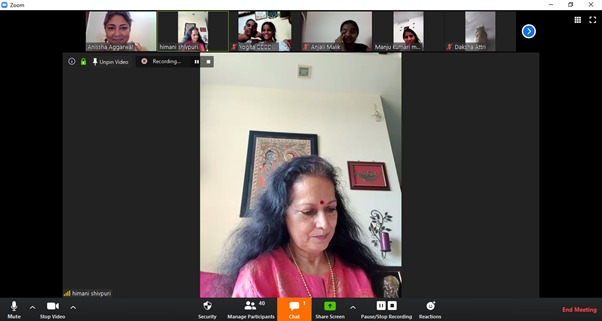Teach for India, part of the Teach for All network, provides opportunities for students in some of India’s lowest-income communities to learn from the brightest minds drawn from the nation’s best universities and workplaces.
The teachers, known as Fellows, get firsthand experience and knowledge that helps them earn future leadership positions in the education system and other sectors. At the same time, students in some of India’s most under-resourced schools get access to enriching education opportunities with eager, passionate, and creative teachers.
By partnering directly with teachers, principals, and students at the grassroots, Teach for India is helping Indian children reach their full potential and serves as a catalyst for lasting change within India’s education system.
Continuing education and social interaction during lockdown
Teaching in under-resourced schools already presents a number of unique challenges to educators, but when COVID-19 spread across India, educators had to resolve an entirely new set of challenges.
“During those first two months of lockdown in India, everyone was confined to their homes,” said Anissha Aggarwal, a Fellow for Teach for India. “The average child I teach lives in a one-room apartment with six or seven other people, and if you can imagine, that creates a situation where it’s difficult to deliver education effectively. More well-off children have laptops and dedicated areas to study in their homes, but these children don’t have that. Phone and data availability too are scarce.”
Like much of the world, Aggarwal turned to video conferencing to recreate school for her students directly into their homes. However, Aggarwal and her colleagues had two very specific requirements for a video conferencing platform — it had to be simple to learn, easy to use and it had to be sensitive to the economics of their students.
“Many of the students have mobile phones to use for video conferencing, but the majority of these devices are smaller, low-end devices without a lot of storage, so the application itself can’t take up a lot of space,” Aggarwal said. “These students are getting by on a daily data allowance, so bandwidth was another concern. These children aren’t digital natives either, so the application needed to be intuitive enough for them to use.”
Implementing a solution for effective, dynamic remote education
In her search for a video conferencing solution that could meet her needs and the needs of her students, Aggarwal found that Zoom offered the ease of use, flexibility, and reliability that students needed to attend virtual classes and the functionality Aggarwal needed to deliver the curriculum effectively.


